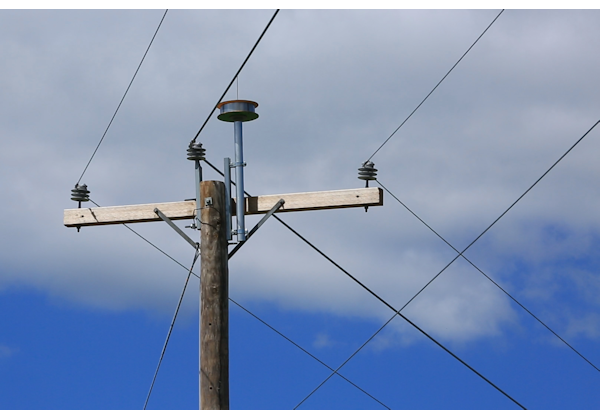Could AT&T’s AirGig Augment Fibre and Even 5G?

Over the years there have been attempts to deliver high-speed Internet over public electric power lines. Broadband-over-power-line access is a method of delivering connectivity over long distances using existing electric wiring. The concept of using a widely installed infrastructure is intriguing but getting the technology to market has been challenging owing to electrical interference problems.
To be clear, AT&T’s AirGig uses different technology. The signals don’t travel through the power lines but rather surf above them. AT&T places 360-degree antennas at the top of utility poles that allow signals to travel in all directions. Signals propagate in a mesh-like architecture partially guided by the power lines; they can also be delivered to homes along the way through proprietary equipment installed on premises.
The AirGig trials were launched in a non-specified location outside the US (we note that AT&T has interests in several Latin American countries) and have now come to Georgia in the US. AirGig has the potential to deliver broadband services to rural areas where expensive and metered satellite-based broadband is often the only practical option. The technology could help expand Internet access to underserved areas of the world.
AT&T’s announcements about AirGig have been light on detail and many of the technical and financial aspects aren’t yet clear. AirGig combines unlicensed high-frequency airwaves in the millimetre-wave spectrum and a proprietary air interface to deliver fixed connectivity that AT&T claims will hit gigabit speeds.
It’s clear that there is goodwill to be gained by AT&T as it can pipe in connectivity to areas of the world still waiting to get online. It isn’t the carrier’s first such project. Earlier in 2017, it began a fixed wireless service using LTE to connect underserved communities in Georgia. A few months later, the company expanded the service to areas in eight other states (see AT&T Expands Its Fixed Wireless Service).
AT&T’s announcement of its AirGig trials comes several weeks after Verizon revealed plans to launch 5G fixed wireless services in several locations in the US in 2018. By exploiting its fibre network and using pre-standard 5G signals for the last mile, Verizon plans to offer unlimited broadband service in states where it doesn’t currently offer its fixed-line fibre-based Fios broadband service.
The success of AirGig will not just depend on the cost of deploying and maintaining the service, but also cooperation from utility companies and local regulators. It would seem that AirGig is a promising technology that could compete against and augment broadband satellite, fixed wireless access and potentially fibre in some areas. But AT&T is still developing AirGig at a time when 5G is nearing completion. AT&T could use AirGig as part of its 5G backbone, but for wider wireless usage it will need to go against the grain of global standardization efforts.
AT&T will learn from the current trials and continue to develop AirGig, but there’s no timeline for commercial deployment. Nonetheless, the term AirGig will be one to look out for in 2018.

 Twitter
Twitter
 Facebook
Facebook
 LinkedIn
LinkedIn
 Email
Email